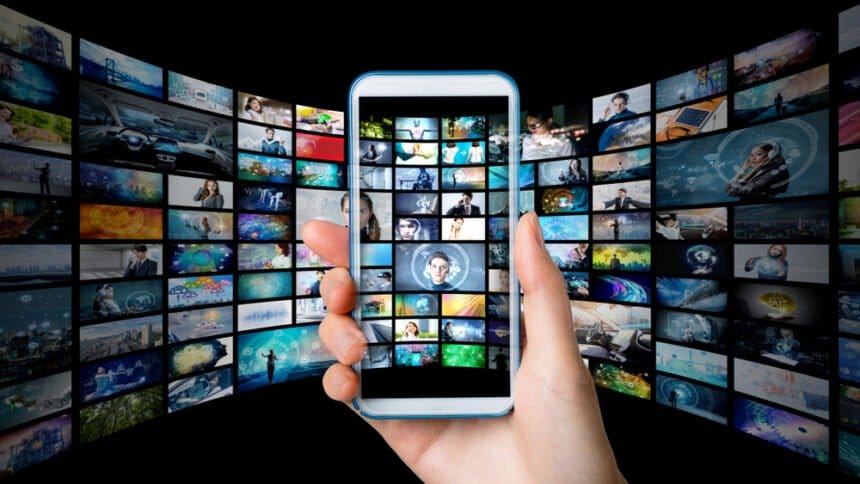AI technology has significantly improved the entertainment industry. A growing number of streaming services such as Netflix have used AI algorithms to deliver more personalized content and improve the user experience for their customers. A couple of months ago, a new report showed that Netflix is also using AI technology to improve the visual effects of the films and series that it produces.
Overall, AI is driving major changes in the streaming industry. As a result, these services are proving to be higher value than those offered by cable television.
As more streaming services offer AI-driven services to bolster the customer experience, they are capturing more customers around the world. This is going to permanently revolutionize the entertainment industry, including offering more social TV experiences.
In the not-so-distant past, cable television ruled the roost when it came to home entertainment. Families gathered around their living room TVs, flipping through channels to find their favorite shows, sports events, or movies.
However, in recent years, a profound transformation has taken place in the way we consume content. A global shift from cable TV to online streaming services has reshaped the media landscape, and this article will delve into the reasons behind this seismic change, its implications, and what the future might hold for the entertainment industry.
The Rise of Online Streaming Services
The rise of online streaming services can be attributed to several key factors that have reshaped the way we consume media:
- Online streaming services, such as Netflix, Amazon Prime Video, Hulu, and Disney+, offer unparalleled convenience. Subscribers can access a vast library of content at their fingertips, anytime and anywhere, on a variety of devices including smartphones, tablets, smart TVs, and laptops. This level of accessibility was a game-changer compared to cable TV’s fixed schedules and limited mobility.
- Streaming platforms offer a wide range of content, catering to diverse tastes and preferences. Viewers can choose from an array of genres, languages, and content types, allowing for a highly personalized viewing experience. The ability to create individual profiles within an account further enhances this customization.
- AI has helped improve the ability of artists to get their content out there. One professional stated last month that AI helped them get their music onto major streaming services.
Ad-Free Experience
One of the most significant advantages of online streaming is the reduction or complete elimination of advertisements. Unlike cable TV, which often interrupted shows and movies with commercials, streaming services typically offer ad-free or limited-ad viewing experiences for a fee.
Original Content
Streaming giants have invested heavily in creating original content, from critically acclaimed series to blockbuster movies like Red Notice, Coraline, and Gray Man to name a few. This exclusive content not only attracts new subscribers but also garners critical acclaim and awards, elevating the reputation of these services.
Many streaming services are competitively priced, making them an attractive option for cost-conscious consumers. When compared to the often-expensive cable TV packages, streaming platforms offer flexibility and affordability, allowing users to choose the services that best suit their needs.
The Decline of Cable TV
As streaming services have surged in popularity, cable TV has faced a decline in viewership and subscriptions. Several factors have contributed to this decline:
Cable TV subscriptions have traditionally been expensive, often bundled with channels that viewers may not want. With streaming, consumers can select only the services they need, reducing costs.
It often came with contracts and packages that limited flexibility. Streaming, on the other hand, offers month-to-month subscriptions with no long-term commitments, giving consumers the freedom to switch or cancel services at any time.
Cable TV relies on traditional cable infrastructure, which can be less reliable and offer fewer features compared to modern streaming technology. Streaming services leverage the internet, providing better picture quality and more interactive features.
Cable TV’s user interface has often been criticized for being clunky and unintuitive. Streaming platforms invest in user-friendly interfaces and recommendation algorithms that enhance the viewer’s experience.
The shift from scheduled programming to on-demand content has been a significant driver. In an era where time is of the essence, viewers appreciate the flexibility to watch what they want when they want it.
Global Impact and Industry Disruption
The shift from cable TV to online streaming services has had a global impact, disrupting the entertainment industry in several ways:
Streaming services have transcended geographical boundaries, reaching audiences worldwide. This global reach has allowed content creators to tap into new markets and diversify their offerings.
Streaming platforms have expanded the diversity of content available to viewers. International shows and films have gained popularity, fostering cultural exchange and a broader appreciation for content from different regions.
The streaming industry has become intensely competitive, with new entrants continually emerging. This competition has driven innovation and led to a greater focus on content quality and user experience.
The pandemic accelerated the trend of releasing movies directly on streaming platforms, bypassing traditional theatrical releases. This shift has raised questions about the future of movie theaters and how studios distribute their films.
As cable TV viewership has declined, advertisers have followed the audience to streaming platforms. Streaming services have adapted by incorporating advertising options, but they must balance this with providing a premium, ad-free experience for subscribers.
The Future of Entertainment
As the global shift from cable TV to online streaming services continues, it’s essential to consider what the future holds for the entertainment industry:
Streaming services will continue to expand globally, reaching new markets and demographics. As internet access improves in underserved regions, the potential for growth is significant.
While the sheer volume of content available on streaming platforms is impressive, there will likely be a greater focus on quality over quantity. Original content will continue to drive subscriptions, leading to more investment in high-quality productions.
Some cable providers are adapting to the changing landscape by offering hybrid packages that include both traditional cable channels and streaming services. This approach aims to cater to a broader range of customers.
The global shift from cable TV to online streaming services has fundamentally transformed how we consume entertainment. The convenience, choice, affordability, and quality offered by streaming platforms have driven this shift, leading to a decline in cable TV subscriptions. The impact of this change is felt not only in the entertainment industry but also in advertising, content creation, and cultural exchange.
As we move forward, the entertainment landscape will continue to evolve. Streaming services will expand, focus on quality, and adapt to new challenges such as content licensing and sustainability.
In this ever-changing environment, one thing is certain: the way we consume media will continue to evolve, driven by technological innovation and the evolving demands of consumers around the world.









